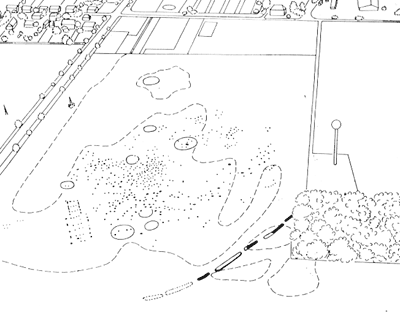 |
Continuity in the prehistoric cultural landscape has been established,
particularly for production areas (functional, practical causes) and
burial grounds (symbolic reasons). At Tišice, for example, and in the
valley of the Vinoř stream, settlement area
continuity has been established spanning changes in culture.
|
 |
The
Iron Age landscape was heavily, indeed
almost entirely, forested (established from research in the Loděnice
catchment area). |
 |
Other
than links to components of the natural environment, there were strong
bonds with preceding cultural landscapes. Settlement processes were also dependent on social factors.
From this, it is perhaps possible to arrive at a means of predicting the
occurrence of sites of archaeological interest. |
 |
In
the framework of (extensive, continual) prehistoric settlement areas, the shifting of residential and burial components occurred,
probably at the level of different archaeological cultures. |
 |
The
prehistoric Bohemian landscape contained far more closed, linear
features - enclosures
of differing shapes and sizes - than hitherto believed. |
 |
The discovery of several new hill-forts, whose
fortifications were identified purely thanks to crop marks, indicates that
the fortification of exposed locations
(particularly raised spurs isolated by one or two ditches) was more frequent than previously believed,
on the basis of traces in relief 9ditches and embankments) or field
excavations. |
|
